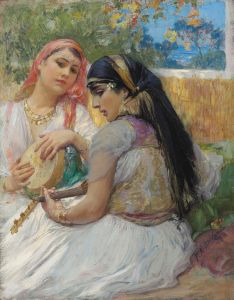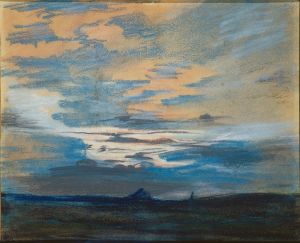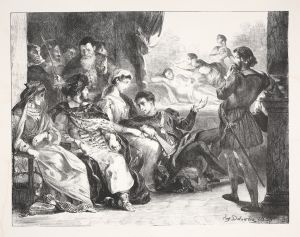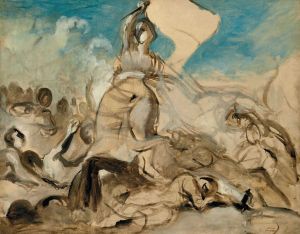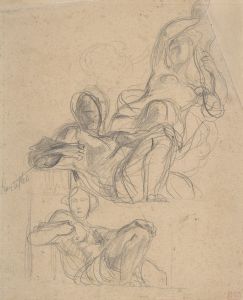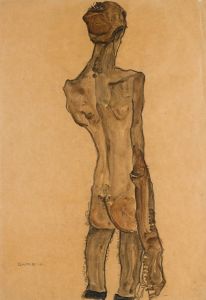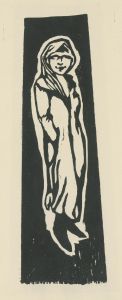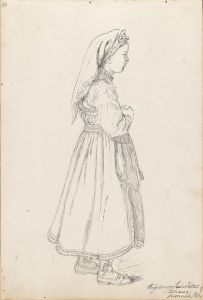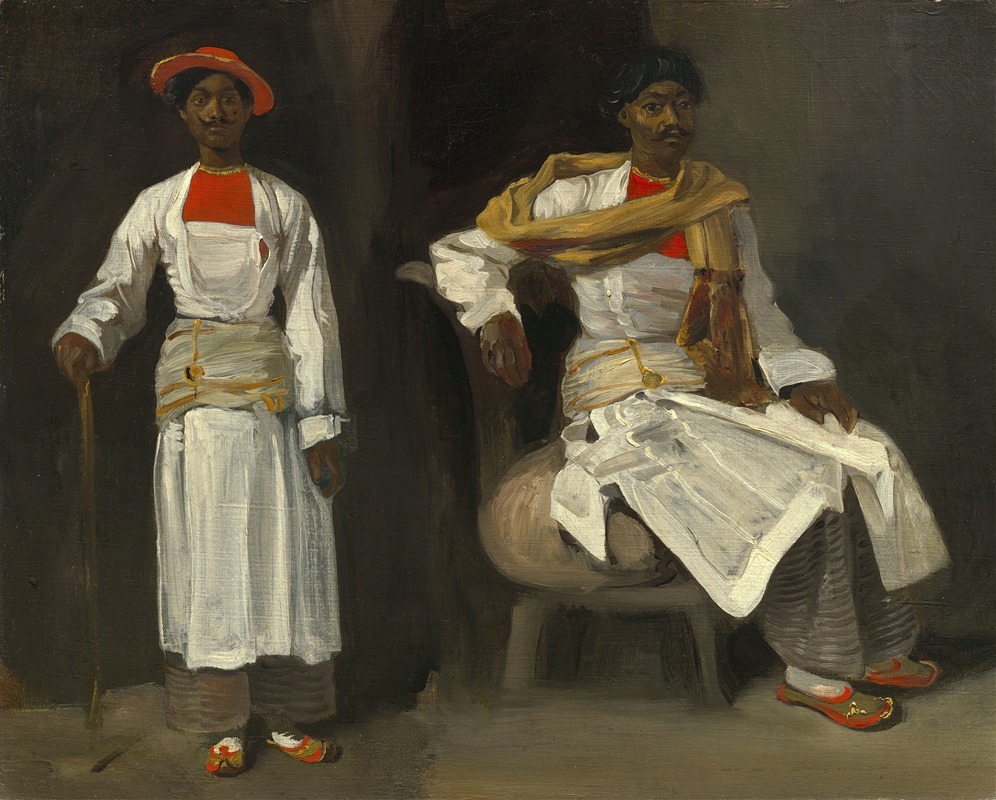
Two Studies of an Indian from Calcutta,Seated and Standing
A hand-painted replica of Eugène Delacroix’s masterpiece Two Studies of an Indian from Calcutta,Seated and Standing, meticulously crafted by professional artists to capture the true essence of the original. Each piece is created with museum-quality canvas and rare mineral pigments, carefully painted by experienced artists with delicate brushstrokes and rich, layered colors to perfectly recreate the texture of the original artwork. Unlike machine-printed reproductions, this hand-painted version brings the painting to life, infused with the artist’s emotions and skill in every stroke. Whether for personal collection or home decoration, it instantly elevates the artistic atmosphere of any space.
Eugène Delacroix, a prominent French Romantic artist, is renowned for his expressive brushwork and vibrant use of color. Among his numerous works, "Two Studies of an Indian from Calcutta, Seated and Standing" is a notable piece that reflects his interest in diverse cultures and his skill in capturing human figures with vivid realism.
This artwork consists of two studies, as the title suggests, depicting an Indian man from Calcutta in two different poses: seated and standing. Delacroix's fascination with exotic subjects was a common theme in his oeuvre, influenced by his travels and the Orientalist movement of the 19th century, which romanticized the cultures of North Africa, the Middle East, and Asia. Although Delacroix never traveled to India, his exposure to Indian culture and people likely came through his interactions in Paris, a hub for international exchange during his time.
The seated figure in the study is portrayed with a relaxed posture, suggesting a moment of rest or contemplation. Delacroix's attention to detail is evident in the intricate rendering of the man's attire, which reflects traditional Indian clothing. The standing figure, on the other hand, exudes a sense of dignity and poise. Delacroix's use of light and shadow enhances the three-dimensionality of the figures, showcasing his mastery in depicting the human form.
Delacroix's studies are not mere representations of physical appearance; they also convey a sense of character and presence. His ability to capture the essence of his subjects is a testament to his observational skills and his deep appreciation for the diversity of human expression. These studies may have served as preparatory works for larger compositions or as standalone pieces that allowed Delacroix to explore and document the nuances of human anatomy and cultural attire.
The artwork reflects the broader context of 19th-century European art, where there was a growing interest in ethnographic studies and the depiction of non-European subjects. Delacroix, like many of his contemporaries, was drawn to the allure of the 'exotic,' which provided a rich source of inspiration and a means to challenge the conventions of Western art.
"Two Studies of an Indian from Calcutta, Seated and Standing" exemplifies Delacroix's commitment to capturing the vibrancy of life and the diversity of human experience. His work continues to be celebrated for its dynamic composition, emotional depth, and the artist's ability to transcend cultural boundaries through art. While specific details about the creation and provenance of this particular piece may be limited, it remains an important part of Delacroix's legacy, illustrating his role as a bridge between cultures and his contribution to the Romantic movement's exploration of the human condition.






